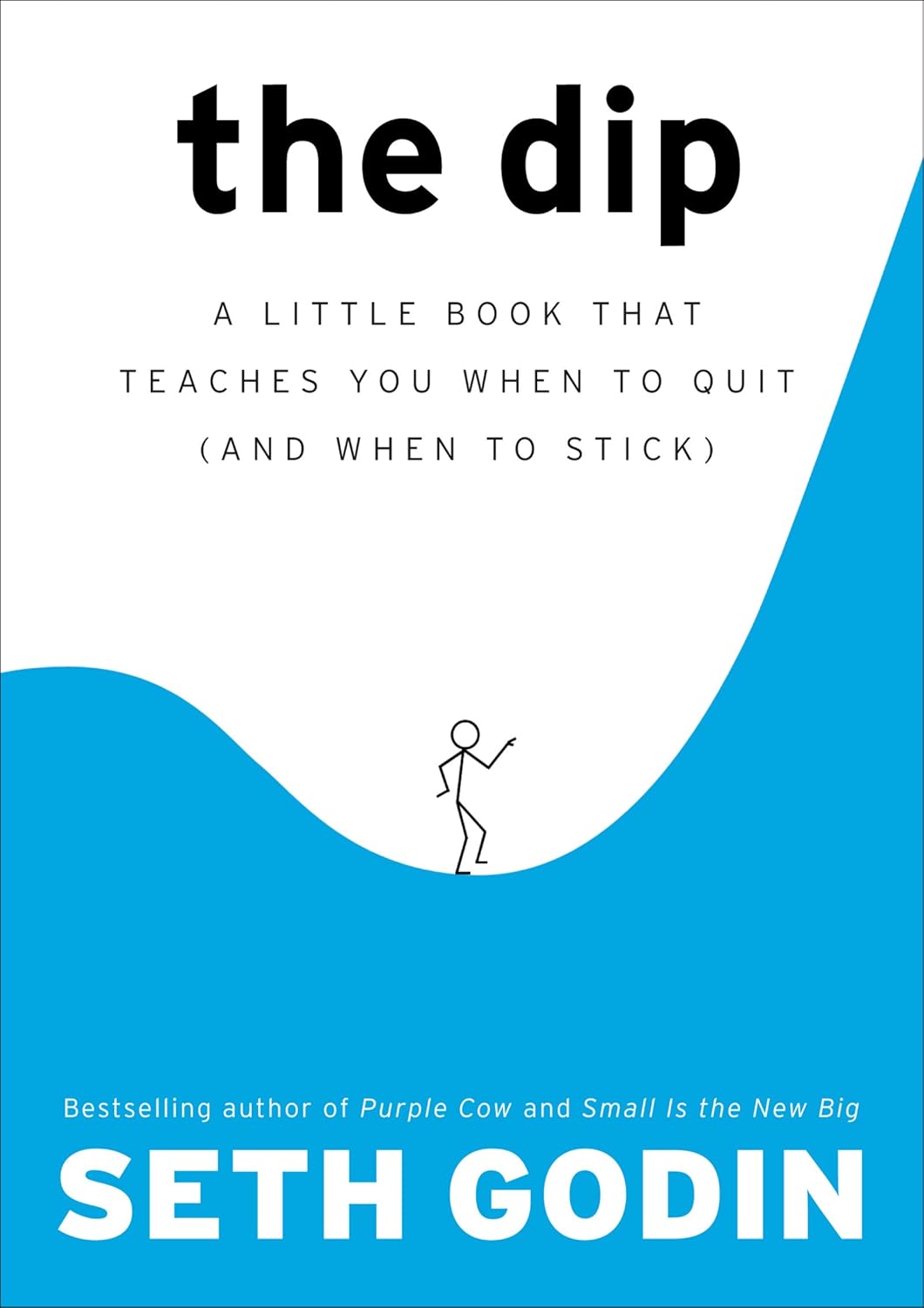This book…
Urges strategic quitting and focused perseverance to become exceptionally useful.
- Why this matters: Shapes wise perseverance in discipleship and ministry focus.
- Who it’s for: Helps pastors and builders choose work worth finishing.
- Between the lines: Overstates specialization and underestimates integrative wisdom.
- At a glance: 96 pages • 2007 • General market • Easy • 3.9/5
A concise argument: quit dead ends and endure “the dip” where mastery forms. Scarcity makes excellence valuable. Pre‑decide quitting criteria and pursue narrow usefulness.
Strategic Quitting and Perseverance
I found this book during a quick stop at Goodwill. I first picked it up for my son as he prepared for college. It’s a simple frame that fits many parts of life and ministry. It helped me see where focus would serve people better than breadth.

Structure
Godin sketches three paths: the cliff, the cul‑de‑sac, and the dip. Value grows in the dip because few stay the course. Decide quitting rules before pressure hits. Aim at a specific audience. Track real progress, not noise. Short chapters show how to quit well and endure where it counts.
Evaluation
Scripture affirms endurance under trial: “Knowing this, that the trying of your faith worketh patience.” James 1:3–4. The market goal needs a higher end: love of neighbor and faithful stewardship. Specialization helps, but the church also needs integrated gifts working as one body.
Strengths
Clear names for failure paths prevent waste. Pre‑decision checklists calm panic. Audience focus and long horizons resist vanity metrics and quick wins.
Cautions
A strong push against being well‑rounded can miss creative integration. “Best in the world” can slide from vocation to brand without a biblical anchor.
Quotations
- “The dip creates scarcity; scarcity creates value.” (p. 21)
- “Quit the wrong stuff. Stick with the right stuff.” (p. 4)
- “Decide before the race the conditions that will cause you to stop.” (p. 72)
Takeaways
Name cliffs and cul‑de‑sacs. Exit them quickly. Write a quit‑criteria card before starting. Choose one ministry lane and endure its dip. Track leading indicators, not applause. Align perseverance with calling, not ego.
Conclusion
The Dip clarifies a narrow but crucial discipline. Quit dead ends. Endure the hard middle where usefulness is forged. Godin’s terms give leaders language for terrain they already feel. The tools help you act before panic and plan with a longer view. They also fit ministry planning, counseling rhythms, and project care.
The limits show when “best in the world” becomes self‑branding. A biblical aim resets the goal: love neighbor, keep your calling, and steward gifts. Read this as a sharpening tool, not a full map. Pair specialization with the body’s integrative wisdom. Let the fruit of the Spirit rule your metrics.
How I’ll use it: each quarter I will name cliffs and cul‑de‑sacs, apply quit‑criteria before I commit, and choose one lane to deepen for the year. I will coach teams to spot panic versus principle and to trade short‑term optics for steady progress. In that frame, The Dip is a concise companion for pruning noise and doing work that serves people well.Strategic quitting and focused perseverance guide leaders in choosing valuable work, avoiding dead ends, and fostering meaningful ministry impact.
